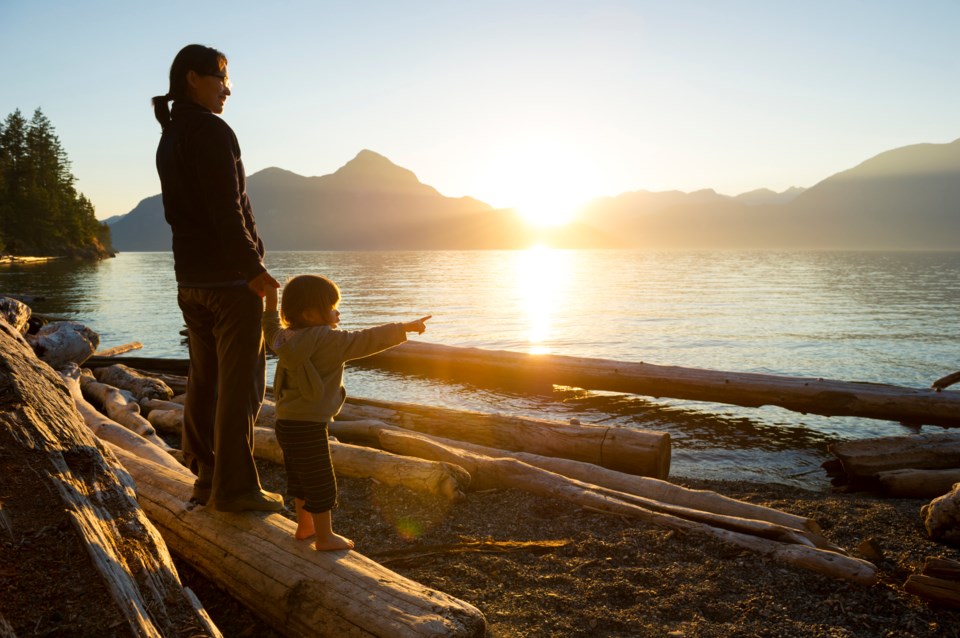A five-year-long quest has finally paid off.
The Howe Sound area, (Átl’ka7tsem), has been given worldwide recognition as an area of importance by the United Nations Educational, Scientific and Cultural Organization (UNESCO).
On Sept. 15, the region was at long last recognized as Canada’s 19th biosphere region by UNESCO, according to a news release from the Howe Sound Biosphere Region Initiative.
This means that the international organization has deemed this place a zone of global ecological significance.
For the head of the Howe Sound Biosphere Region Initiative Society, which was responsible for making this project a reality, it’s been a happy conclusion to years of hard work.
“It’s really gratifying and it’s almost surreal,” Ruth Simons told The Chief.
“Certainly, when we looked at the nomination documents, the blank template, it was quite daunting. And so it’s just really satisfying to know that all the great work that everybody collectively put in towards this project has been recognized by this prestigious international body.”
While this title does not create a park or grant any legal authority, the international designation does carry prestige and can be a point of leverage for environmental advocates.
Simons added that some people are under the impression that the UNESCO designation will mean another layer of bureaucracy in decision-making.
This, she said, is not true.
“It’s not a mechanism to stop development — it is a framework under which all the authorities come together and have a holistic plan,” said Simons.
The hope is that this designation will encourage sustainable development, she said.
“The biosphere regions actually are places for learning, for science, for research and restoration. And the more we know, the more we make better decisions,” Simons said.
“So I think for developers coming into the region that hopefully with the tools and more data and more information, then we make better decisions.”
This newfound title is not a given — it will have to be maintained. Locals must demonstrate to the organization every 10 years that the location is living up to the standards of a UNESCO biosphere, or Howe Sound will lose its status.
“I think the ultimate game plan is...healthy clean air, healthy waters, healthy soil,” said Simons.
“The game plan is ultimately that we have [a] collective vision and plan and everybody putting their efforts towards ensuring that this is a healthy environment for people and keeps people connected to nature. That we really help stem the curve of biodiversity loss and stem the curve of impacts of climate change.”
The newly-designated biosphere region covers 218,723 hectares of land and sea, encompassing the entire Howe Sound watershed.
Its boundaries begin near Point Atkinson in West Vancouver, running north to Black Tusk near Whistler, and as far west as Gower Point on the Sunshine Coast.
The core protected area traverses five B.C. provincial parks, one B.C. provincial conservancy, and several marine refuges.
The region includes several iconic landmarks, such as Mt. Garibaldi (Nch’kay̓), a diamond-shaped peak towering over the Squamish landscape. Within the last two decades, the area has seen a substantial recovery after more than a century of environmental degradation.
The news of the biosphere designation also earned praise from a Squamish Nation official involved in the biosphere effort.
“My hope is that it will effectively bring all communities in Átl’ka7tsem [Howe Sound] together for effective decision making but also to help people get out on the land. Building that connection, to the territory and the land, will help people better honour and to respect the environment but also the life that lives in that environment,” said Joyce Williams, Squamish Nation councillor and co-chair of Howe Sound Biosphere Region Initiative Society Board, in the news release.
“Átl’ka7tsem is really about beauty and hope, as much as it is about sustainable development.”
Tourism Squamish also told The Chief in an emailed statement the UNESCO title was a positive outcome.
“This designation will help us protect and promote the critical ecosystem, ecological and recreational values of the Howe Sound region,” wrote the society’s executive director, Lesley Weeks.
“Tourism Squamish is passionate about preserving and protecting our access to our natural assets. Having this incredible place we call home recognized as an area of global ecological significance will inspire a positive future for people and nature.”
Squamish’s mayor also heralded the development as a significant milestone.
“The designation of Átl’ka7tsem/Howe Sound fills me with optimism, providing new momentum to continue our work together to create a sustainable future for the Átl’ka7tsem/Howe Sound region. It also represents the collaborative and tireless efforts of individuals, organizations, governments and First Nations,” said Mayor Karen Elliott in the news release.
“The climate emergency is one of our greatest challenges and the Alt’ka7tsem/Howe Sound biosphere region designation will help us work with partners regionally to develop the solutions we need. The designation also amplifies the significance of our local environment and showcases to the world our region’s incredible beauty, biodiversity and cultural richness. Biosphere regions have the unique ability to bring people together through common ground, based on a shared vision and goal. I look forward to Squamish playing an active role in the collaborative effort to create a sustainable future for the Átl’ka7tsem/Howe Sound region.”




